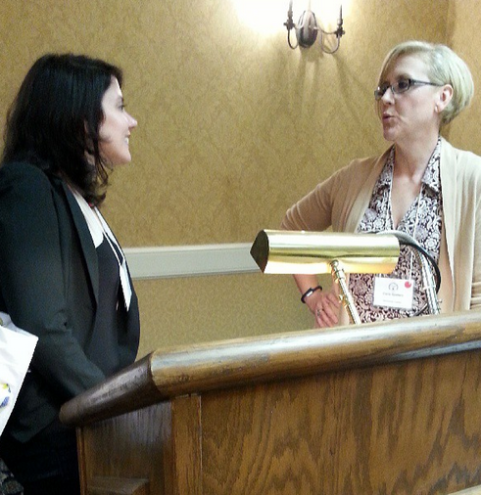The Philadelphia Writers’ Conference (Or a King in a Zeppelin)
Posted by Yorick Magazine
Dear Spider People and People Spiders,
Yorick, your friendly neighborhood literary magazine, is here again at the Philadelphia Writers’ Conference in, well, Philadelphia. Specifically the Wyndham Hotel on Race Street. If that even matters. It’s raining like a king who can’t spell, or who’s crying too much in his zeppelin above the city. So that part’s awful and relatively lends itself to a bildungsroman story. Oh rain.
But! The first session of Carla Spataro’s Short Story class was a great start to the conference (Ed Rendell was the real beginning, but unfortunately I was being a senseless consumer and bought a cup of coffee at the Starbucks down the road during the speech). Carla is not only the Creating Writing MFA director at Rosemont College, but she is also the editor-in-chief of Philadelphia Stories, a wonderful publication with powerful fiction, poetry, artwork, and photography. It’s awesome. So with that introduction to this fine instructor, let’s start off with a few pointers she had to provide about the lugubrious art of short storytelling.
1. A successful short story is structured as follows: conflict, complication, more conflict, then resolution. Carla addressed the old adage that literary fiction is strictly character drive, but what’s very important to realize is that literary fiction must still have a plot. Even though writers stigmatize genre writing as being trite and unintelligent because its stereotypically undeveloped characters, plot should still be a realized part of any good piece of short fiction. To be fair, genre fiction is not the bugbear that professionals think it to be. There’s a reason that genre fiction sells.
2. A successful short story is also structured as follows: exposition, development, and drama. Yet another road towards the same Rome. This theory, developed by Frank O’Connor in his guide to writing, The Lonely Voice, helps us determine if our story can even stay afloat. Carla had us write a sentence for these sections for a hypothetical or working story. If one section proves difficult, then that section needs improvement. Short stories, though they need not be outlined, should have a strong logical foundation. Without such, a story becomes a couple at a bar talking about nothing and going home. Have things happen! Create conflict!
3. A successful short story is also structured as follows (tired of this yet?): you’ve heard of Freytag’s Pyramid, the traditional five-act structure that progresses from exposition to the rising action to the climax to the falling action and then to the denouement, that vague French term that comes close to meaning some sort of resolution. Carla informed us, however, of the contemporary story structure, which starts in media res, or in the middle of the story, and continues to the exposition and then the inciting action. With the following rising action leading to another conflict and falling action, the structure looks like a surreal checkmark mountain range, going up, up, up. Most postmodern fiction comes in this form nowadays. It eliminates excessive exposition, which Carla said “makes her want to poke her eyes out.”
4. There are about 157 million ways to approach a short story. But my advice, friends, is to simply write your story, then analyze it for its flaws. A zeppelin with a king inside can’t get off the ground if the king cries too much about the whole damned thing (full circle, eh?) Anyhow, I don’t want to steal too much of Carla’s thunder. Consider her program if you’re serious about creative writing and submit to her wonderful magazine.
Here’s a question: what stories are you working on? What do you think needs to be fixed? But give yourself some credit. What do you like about your story? You always need something to like; otherwise, what’s the point?
Signing off (for now),
Love,
Alex
Posted on June 7, 2013, in Cool Stuff and tagged advice, carla spataro, fiction, kings, literary magazine, philadelphia stories, rosemont college, short stories, writing, writing advice, yorick magazine, zeppelin. Bookmark the permalink. Leave a comment.

Leave a comment
Comments 0